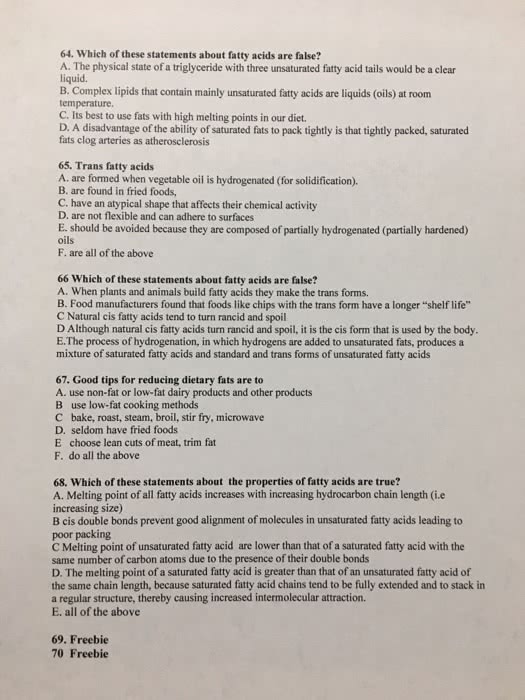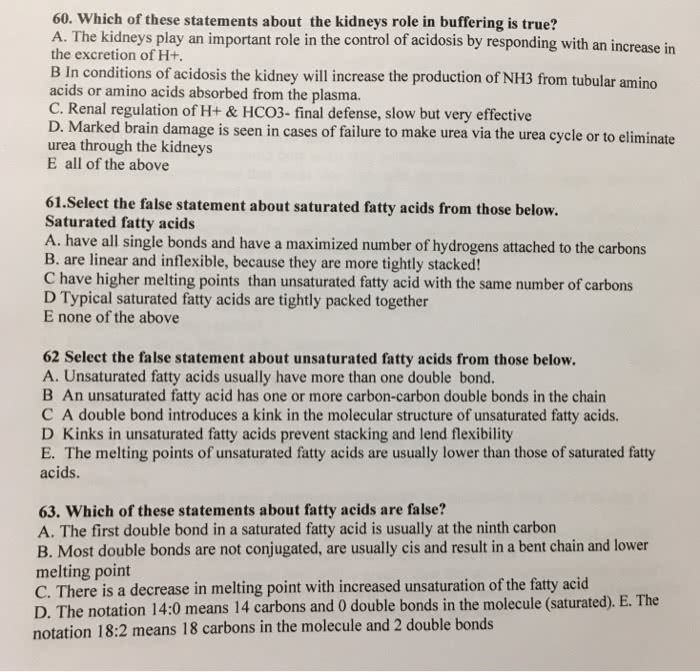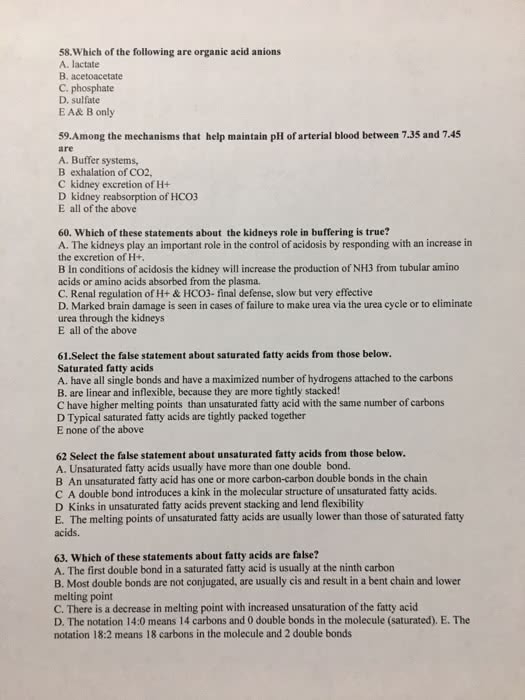CHM 11500 Lecture Notes - Lecture 25: Phospholipid, Hydrophile, Trans Fat
54 views2 pages
29 Jul 2015
School
Department
Course
Professor

27
CHM 11500 Full Course Notes
Verified Note
27 documents
Document Summary
Fats are esters of carboxylic acids and glycerol. This means that carboxylic acids are connected to a glycerol molecule via single bonds to an oxygen atom. In saturated fats, all c-c bonds are single bonds and there are a maximum number of hydrogens attached to the carbons. Saturated fats are typically solid at room temperature. Unsaturated fats have one or more c-c double bonds and as a result have fewer hydrogens. Unsaturated fats are typically liquid at room temperature. Trans fats (fats in which the substituents are on opposite sides of the c-c double bonds) have been shown to be bad for blood cholesterol levels, raising levels of bad cholesterol and lowering levels of good cholesterol. Cell membranes are made of molecules called phospholipids. Phospholipids have a hydrophilic ionic phosphate group on one end and a hydrophobic lipid on the other end. This allows them to be somewhat soluble in both polar and nonpolar solvents.
Get access
Grade+
$40 USD/m
Billed monthly

Homework Help
Study Guides
Textbook Solutions
Class Notes
Textbook Notes
Booster Class
10 Verified Answers
Class+
$30 USD/m
Billed monthly

Homework Help
Study Guides
Textbook Solutions
Class Notes
Textbook Notes
Booster Class
7 Verified Answers


